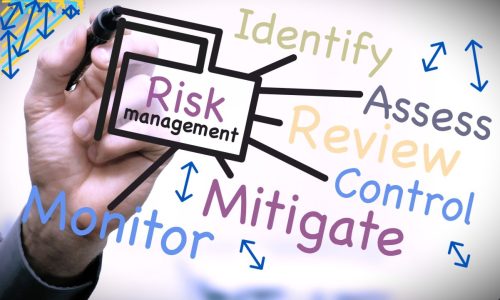Widgetized Section
Go to Admin » Appearance » Widgets » and move Gabfire Widget: Social into that MastheadOverlay zone
No Risk (Management Plan), No Reward
The views expressed are those of the author and do not necessarily reflect the views of ASPA as an organization.
By Joseph G. Jarret
May 2, 2025

My introduction to the profession we know as risk management was during my service as a United States Army Armored Cavalry Officer overseas. The Army, fond of its maxims such as the “5 P Principle,” to wit: Proper Planning Prevents Poor Performance, and its acronyms such as PMCS, which stands for “Preventive Maintenance Checks and Services,” are proven stalwarts. The obvious concept is to be proactive rather than reactive when it comes to preparedness and unit efficiency. All soldiers, enlisted and commissioned alike, were expected to be vigilant, willing and able to spot deficiencies, unnecessary risks or safety violations and to report them.
When I left the military and ultimately became a public sector lawyer, I quickly learned that the risk management department (assuming the entity in question even had a department dedicated to risk and safety management) was one of the most neglected, often maligned and least understood departments in local and state government. This despite the fact that a solid, effective risk management department has the potential to positively and profoundly affect the daily workings of government.
Generally speaking, the risk management department is responsible for reducing the frequency and severity of an entity’s losses through risk transfer and risk avoidance strategies. Further, the risk manager is often called upon to manage the entity’s self-insurance program, which sets aside money for paying valid claims against the entity.
The safety manager is responsible for ensuring a safe and healthy workplace by developing and implementing safety programs, conducting inspections, investigating accidents and providing training to employees, all while adhering to relevant regulations. Many safety managers are well versed in ergonomics and related programs designed to minimize on-the-job injuries.
To some public sector managers, the risk management department is a specialized team best left alone. Many wonder if the department is even necessary; risk and safety is all about common sense, right? The fact is, an effective risk manager can help relieve some of a locality’s fiscal stress by minimizing exposure to workers’ compensation and liability claims through return-to-work programs, aggressive safety education programs and decisive, expedient claims management. When it comes to reducing the frequency and severity of claims, it is the risk manager who ensures that organization members understand the 5-step risk management process outlined below:
Risk identification: What internal and external risks are presented to the organization and the general public?
Risk analysis: What risks can be avoided outright by not assuming the risk, such as determining whether the entity should invest in a skateboarding park? What risks can be transferred through third-party insurance contracts or hold harmless agreements? What are the potential frequency and severity of the identified risk?
Risk control: Because not all risks can be anticipated or avoided, what mechanisms are in place to identify and avoid obvious risks?
Risk financing: How will your entity manage the fiscal impact of loss? Will monies be set aside in a self-insured account or will a third-party administrator be utilized to settle claims on the entity’s behalf?
Claims management: When a loss occurs, will claims be settled in-house or outsourced?
Clearly, there’s more to the above. However, such a process, if consistently followed, can save thousands of taxpayer dollars. And, speaking of maxims, mine has always been, “Every member of the organization is a risk and safety manager.”
A risk manager usually monitors and evaluates third-party claims administrators and excess insurance providers and advises upper management or elected officials whether a claim should be litigated or settled. The person who fills the position is the perfect candidate to accompany the entity’s attorney to claims settlement mediation or arbitration sessions, as she or he is often in the best position to assist the entity’s attorney in evaluating a claim. Further, it is the risk manager who determines the source of settlement funds.
An inability to protect the entity from loss translates into a waste of fiscal resources and taxpayer dollars because both are squandered on payments for claims that might never have been filed had the entity’s employees heeded the risk and safety advice that was given. True, not all risk can be avoided or transferred, but it is essential that all employees are aware of their duty to protect their coworkers, guests, visitors and the general public from known risks or hazards.
In summary, to truly exploit the services that an effective risk manager can provide, the onus is on senior management to ensure that the risk manager is not practicing her or his craft in a vacuum. It is essential that department managers are familiar with the mission and function of risk management as well as the services it provides. Further, managers must be serious about identifying and reducing or, in some cases, eliminating workplace hazards and working with the risk management staff to protect the people and property in their care.
Author: Dr. Joseph G. Jarret is a public sector attorney, administrator and manager who has served public entities at all levels of government. A former United States Air Force Special Investigator and United States Army Armored Cavalry Officer with service overseas, he lectures on behalf of the Department of Political Science at the University of Tennessee, Knoxville. He holds the B.S. in Criminal Justice, a Master’s in Public Administration, a Juris Doctorate and the Ph.D. in Educational Leadership & Policy Studies. He is a past president of the East Tennessee Chapter of ASPA.


Follow Us!